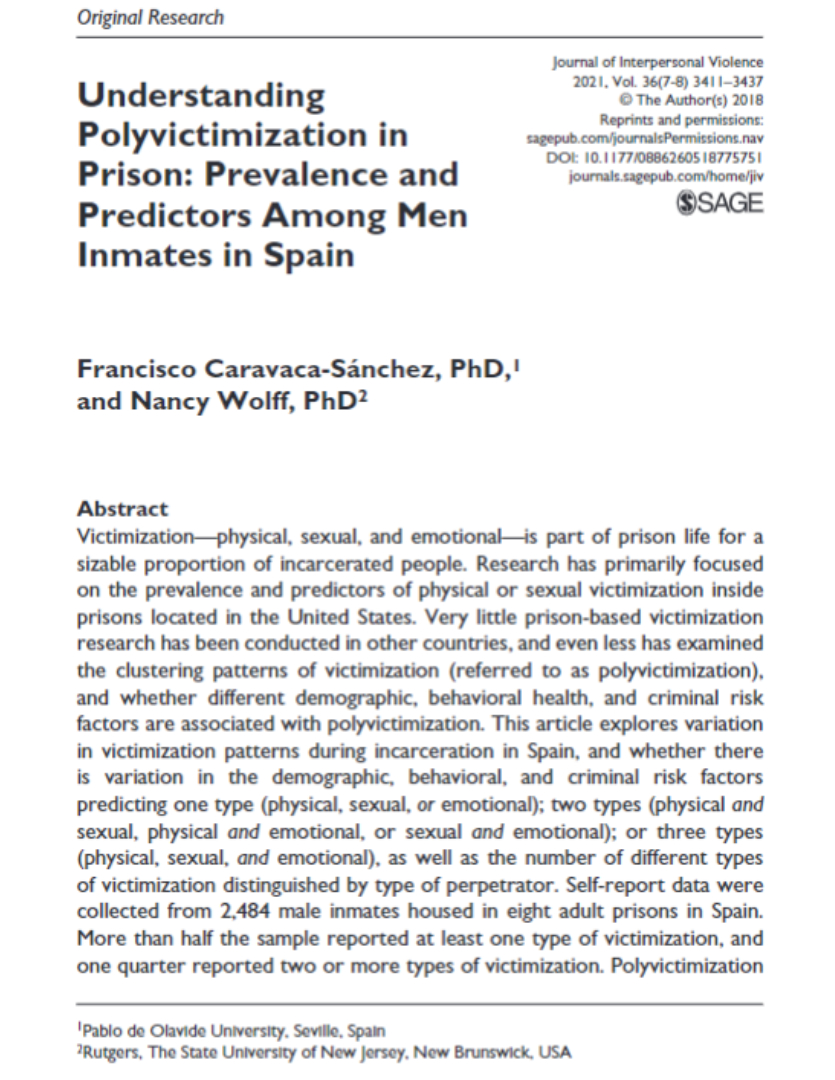Victimization—physical, sexual, and emotional—is part of prison life for a sizable proportion of incarcerated people. Research has primarily focused on the prevalence and predictors of physical or sexual victimization inside prisons located in the United States. Very little prison-based victimization research has been conducted in other countries, and even less has examined the clustering patterns of victimization (referred to as polyvictimization), and whether different demographic, behavioral health, and criminal risk factors are associated with polyvictimization. This article explores variation in victimization patterns during incarceration in Spain, and whether there is variation in the demographic, behavioral, and criminal risk factors predicting one type (physical, sexual, or emotional); two types (physical and sexual, physical and emotional, or sexual and emotional); or three types (physical, sexual, and emotional), as well as the number of different types of victimization distinguished by type of perpetrator. Self-report data were collected from 2,484 male inmates housed in eight adult prisons in Spain. More than half the sample reported at least one type of victimization, and one quarter reported two or more types of victimization. Polyvictimization was found to be strongly associated with prior childhood and adulthood victimization experienced in the community. These findings have significant policy and practice implications.
Understanding polyvictimization in prison: Prevalence and predictors among men inmates in Spain
Citation:
Caravaca-Sánchez, F., & Wolff, N. (2021). Understanding Polyvictimization in Prison: Prevalence and Predictors Among Men Inmates in Spain. Journal of Interpersonal Violence, 36(7–8), 3411–3437. https://doi.org/10.1177/0886260518775751
